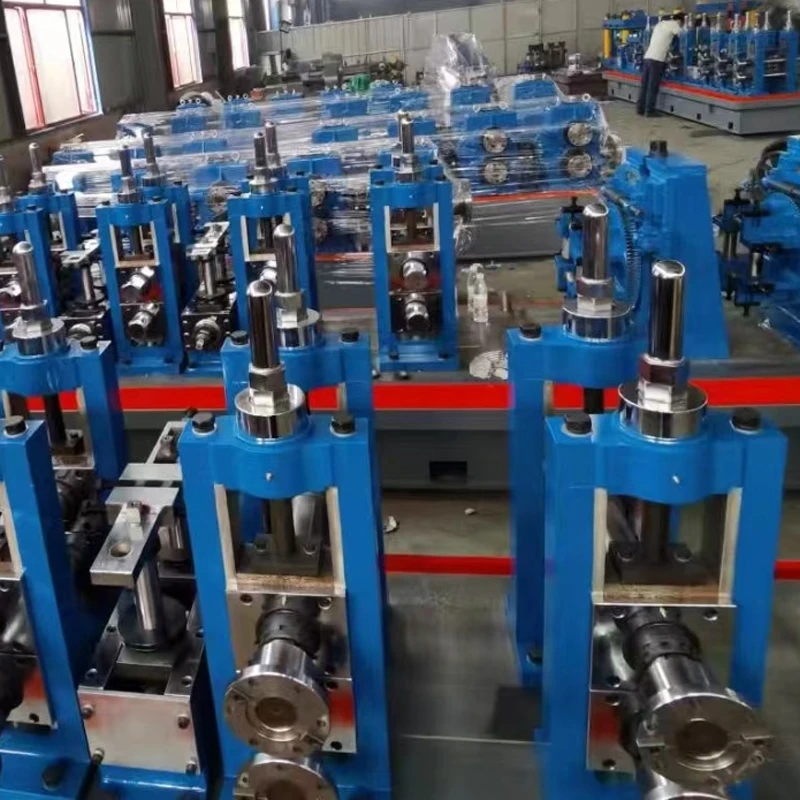Motorized Wire Unwinder for Efficient Material Handling Solutions
The Importance of Motorized Decoilers in Modern Manufacturing
In the ever-evolving world of manufacturing, the efficiency of the production process is paramount. One crucial piece of equipment that often goes overlooked yet plays a vital role in increasing productivity is the motorized decoiler. This device is designed to uncoil metal sheets or strips, making it easier for manufacturers to feed materials into various machines and production lines.
Understanding the Functionality of Motorized Decoilers
A motorized decoiler simplifies the handling of coiled materials. Typically, metal sheets or strips are supplied in coils for ease of transport and storage. However, these coils can be cumbersome and difficult to manage without the proper equipment. Traditional manual decoiling methods are not only labor-intensive but can also lead to inefficiencies and increased risk of injury.
Motorized decoilers, on the other hand, automate this process. These machines feature an electric motor that automatically unwinds metal coils at a controlled speed, ensuring a smooth and continuous feed into downstream equipment such as punches, presses, or roll formers. This automation not only reduces the physical strain on workers but also minimizes downtime between processes.
Enhancing Production Efficiency
One of the most significant advantages of using a motorized decoiler is the improvement in production efficiency. The ability to continuously feed material into production lines allows manufacturers to maintain a consistent workflow. This can be especially beneficial in industries where high-volume output is critical, such as automotive manufacturing or metal fabrication.
Moreover, motorized decoilers can accommodate coils of various sizes and weights. Many models are adjustable, allowing manufacturers to switch between different coil types quickly. This flexibility ensures that production lines can adapt to changing demands promptly, ultimately increasing the responsiveness of the manufacturing process.
motorized decoiler

Safety Benefits
Safety is a top priority in any manufacturing environment. Manual handling of heavy coils can pose significant hazards, including musculoskeletal injuries or accidents caused by incorrectly handled materials. By implementing a motorized decoiler, manufacturers can eliminate much of this risk. The machine handles the physically demanding task of uncoiling, allowing operators to focus on monitoring the production process instead.
Additionally, modern decoilers come equipped with safety features such as emergency stop buttons, guards, and sensors to detect anomalies during operation. These features not only enhance the safety of the machinery but also contribute to a safer workplace overall.
Integration with Other Equipment
Motorized decoilers can also be seamlessly integrated with other machinery in the production line. For example, they can be paired with automated feeding systems that transport the uncoiled material directly into presses or punches, minimizing manual intervention. This combination of technologies fosters a more cohesive and streamlined production environment, which is essential for optimizing overall efficiency.
Furthermore, smart technology integration is becoming increasingly common, with many newer models offering remote monitoring capabilities. This allows manufacturers to track performance data in real-time, enabling predictive maintenance and proactive troubleshooting.
Conclusion
In conclusion, motorized decoilers are indispensable tools in modern manufacturing. Their ability to enhance production efficiency, improve safety, and integrate seamlessly with other machines renders them a valuable asset in any production line that relies on coiled materials. As industries continue to seek ways to optimize processes and reduce operational costs, the role of motorized decoilers will undoubtedly grow more significant. Manufacturers that invest in this technology will not only improve their productivity but also promote a safer, more agile manufacturing environment capable of meeting the demands of the future.
-
High Frequency Straight Seam Welded Pipe Production Line-BzZhou Xinghua Machinery Equipment Manufacturing Co., LTD.|line pipe steel&welded gas pipeNewsJul.30,2025
-
High Frequency Straight Seam Welded Pipe Production Line-BzZhou Xinghua Machinery Equipment Manufacturing Co., LTD.|High Precision&Automated SolutionsNewsJul.30,2025
-
High Frequency Straight Seam Welded Pipe Production Line - BzZhou Xinghua Machinery Equipment Manufacturing Co., Ltd.NewsJul.30,2025
-
High Frequency Straight Seam Welded Pipe Production Line-BzZhou Xinghua Machinery Equipment Manufacturing Co., LTD.|Precision Welding, High EfficiencyNewsJul.30,2025
-
High Frequency Straight Seam Welded Pipe Production Line|BzZhou Xinghua|Precision Welding&EfficiencyNewsJul.30,2025
-
High Frequency Straight Seam Welded Pipe Production Line - BzZhou Xinghua|Precision Engineering&EfficiencyNewsJul.30,2025


